Waterfalls 🢔 Geological wonders 🢔 Categories of wonders
Wonder
Epupa Falls
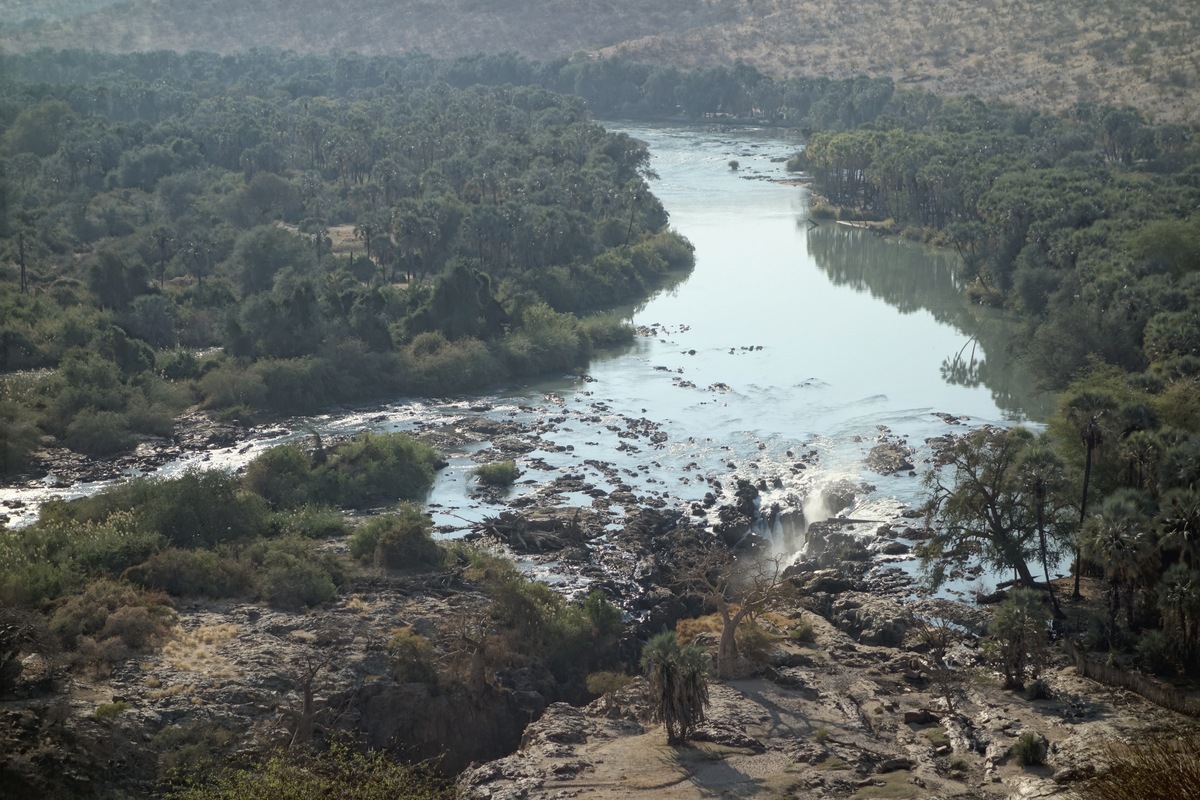
 In short
In short
They might not be the largest falls in Africa, but… Epupa Falls belong to the most beautiful ones.
 44.8%
44.8%
GPS coordinates
Location, address
Alternate names
Height
Width
Average annual flow
Stream
Map of the site
If you see this after your page is loaded completely, leafletJS files are missing.
 In detail
In detail
The mighty Kunene River here divides into numerous smaller streams and each of them falls down in a picturesque canyon. Add to this view an idyllic landscape with baobabs and palms basking in the afternoon sun – there can’t be anything better than this!
Kunene River and its waterfalls
Kunene River collects water from the vast savannas of Angola and, upon reaching the border with Namibia, falls from the mighty, 120 m high Ruacana Falls.
Some 140 kilometers further down the stream is the next large waterfall – Epupa Falls. Here the stream enters the dry hills of Kaokoveld, but the river still is powerful and impressive. Before the falls it becomes up to half a kilometer wide and then falls into several deep ruts. The height of each smaller fall is different but the tallest drops are up to 37 m tall.
The flow of the river is changing throughout the year and at some seasons there is not so much to see. The best time to come to the falls is in April – May.
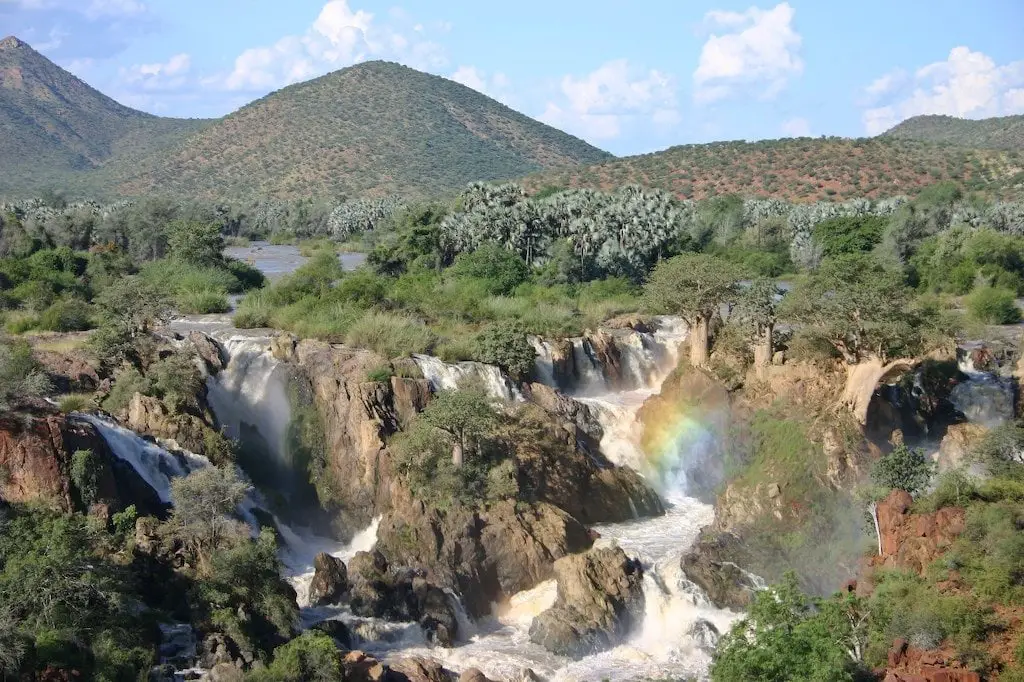
Nature
In Kunene River, especially above the falls live rare and even unique species of fish – this is an isolated sector of the stream between Epupa and Ruacana Falls and in this section have evolved several unique species, such as Nigrobaetis bethuneae, Cunene River stonebasher Hippopotamyrus longilateralis and others.
Waterfalls are located in a desert but in the river valley grows lush vegetation – mopane trees, large baobabs, palms, fig trees. Both local Himba people and occasional tourists love to sit under the mighty baobabs and admire the gorgeous landscape, especially the sunrise and sundown.
A lesser-known feature is some sites with ancient petroglyphs near the falls.
Hydropower plant over Epupa Falls?
The waterfall was endangered by plans to build a hydropower plant with a 150 m tall dam here in the late 1990ies. This project was stopped thanks to a large-scale international public campaign. Currently, there is planned another dam downstream – Orokawe Dam, which also is opposed by groups of indigenous people, although it would not affect the water level at Epupa Falls.
Rise of the tourism industry
Falls are a popular tourist destination even in the situation when this natural monument does not have tourist infrastructure and there are no good roads leading to it.
Local people in this area traditionally have been nomads but the increasing tourism changes this: there appear new opportunities to earn income at the falls. Thus the number of settlers around the falls increases. Here have appeared several lodges and tourists can have guided tours to see the picturesque and biologically diverse area around the falls.
References
- Background on Epupa Falls, International Rivers. Accessed in 3rd December 2018.
 Linked articles
Linked articles
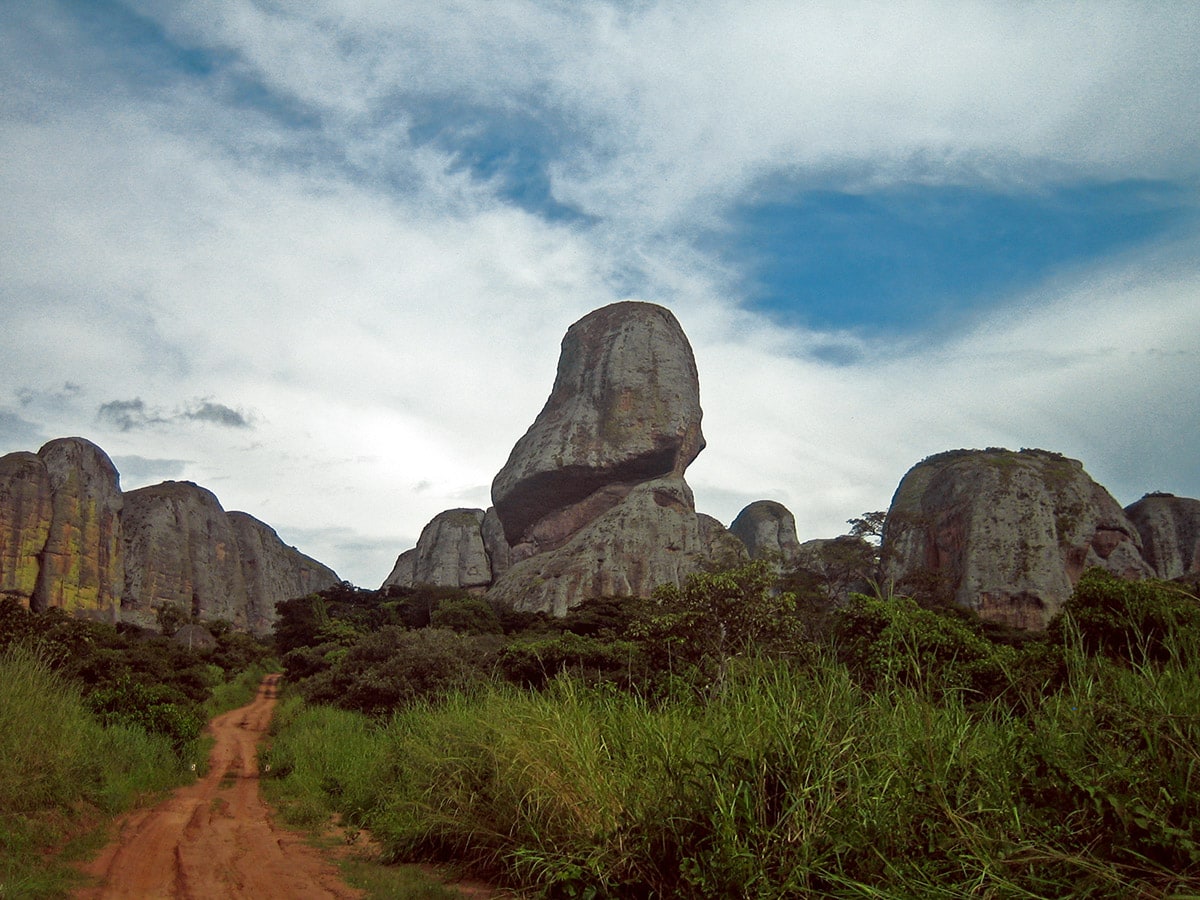
Wonders of Angola
Highlights of Angola could be the otherwordly cliff formations – such as Pungo Andongo and Tundavala cliffs with ravines. Scientifically important are archaeological landmarks left by many local cultures – but it seems that many discoveries are still to be made. The country has gorgeous waterfalls and also interesting examples of Portuguese colonial architecture.
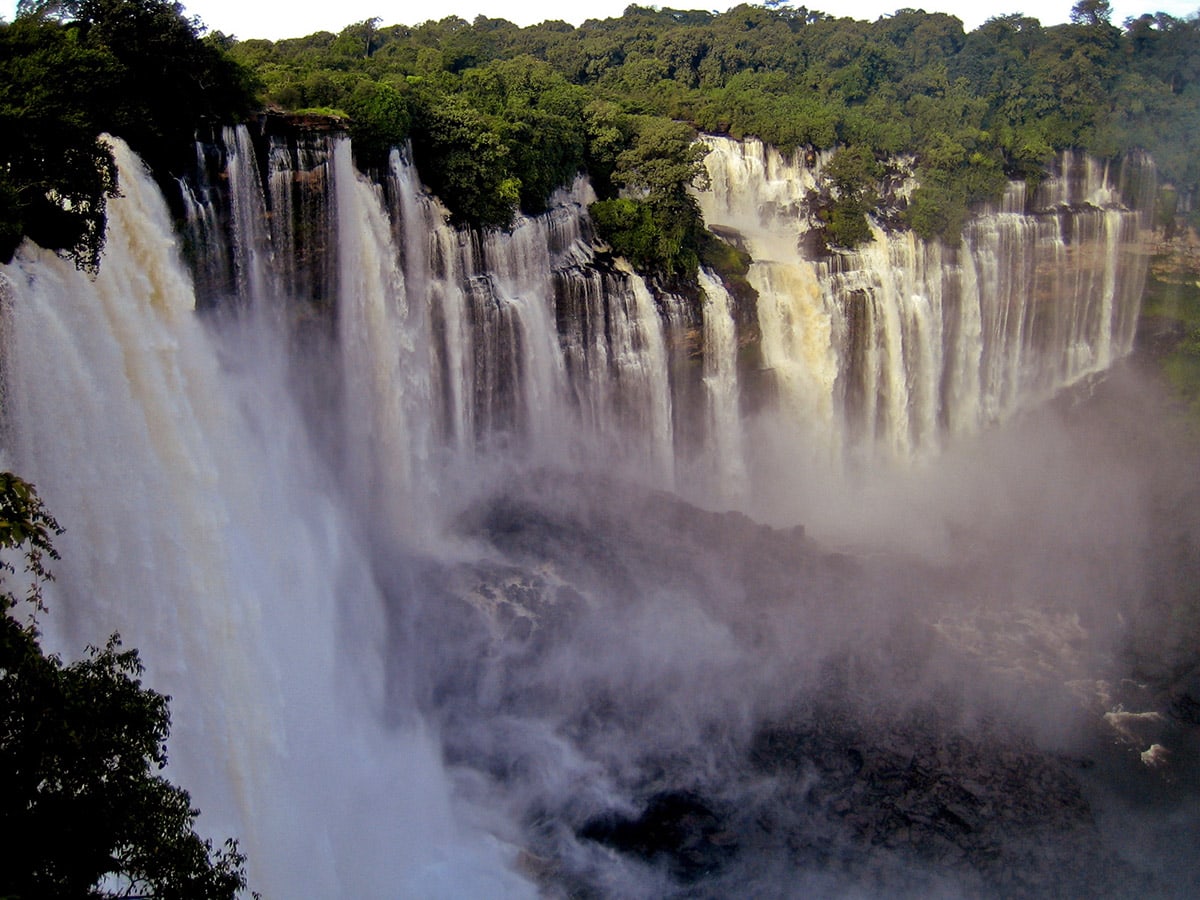
Wonders of Africa
Africa has many outstanding wonders and some of the most surprising ones are the heritage of Egyptian civilization, the vernacular architecture of the Sahel region, tropical ecosystems, and others.
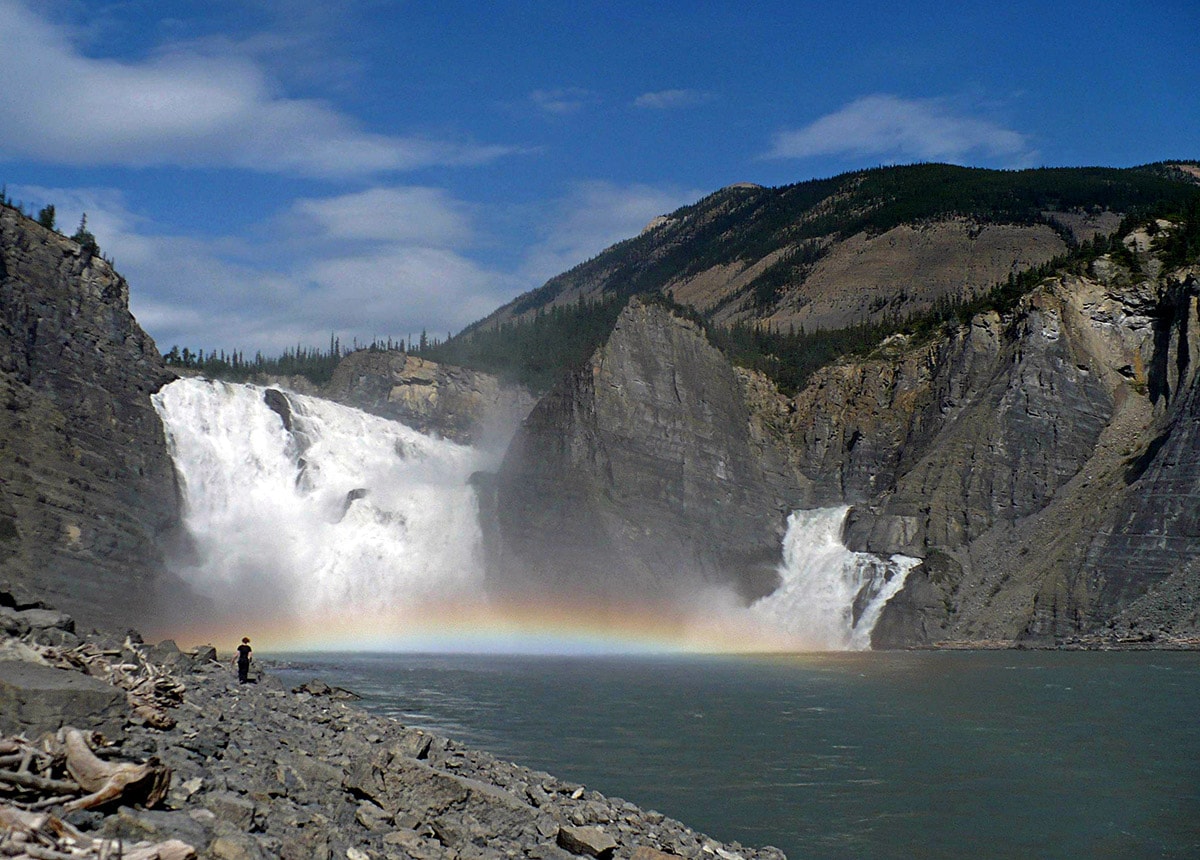
Waterfalls
Some of the most fascinating and awe-inspiring natural monuments are waterfalls or locations where a river abruptly changes its elevation.
 Recommended books
Recommended books
Secret Namibia
Namibia is a vast, ancient place, its legacy an endless expanse of desert sand fringed by coastal plain and rugged mountain terrain and dotted with geological wonders that remain the country’s most impressive features.
Geological Wonders of Namibia
A beautiful depiction (with explanations) of geology in Namibia, from impact crater sites, meteorites, canyons, and limestone caves to vast desert landscapes, moonscapes, and bizarrely shaped rocks, this picture-driven book will feature all the highlights of Namibian landscapes and landforms, with accessible brief explanations of the geology behind each of these.


